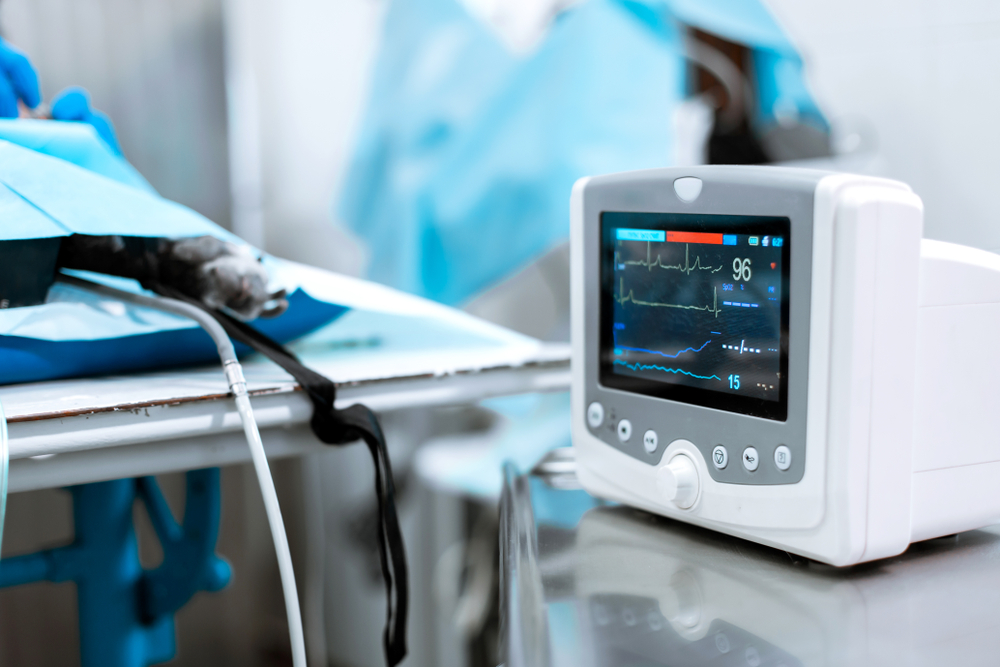How to Successfully Propose a New Equipment Purchase in Your Practice

In veterinary school, you probably enjoyed the latest technology, medications, and state-of-the-art equipment that made assessing, diagnosing, and treating patients easier—and sometimes more fun. Unfortunately, once you are in practice, you likely will find it difficult adapting to the often outdated or unsophisticated technology in most veterinary practices.
As a new graduate, you don’t necessarily have a lot of leverage to request new equipment or items to enhance your patient care. Or do you? Here are some tips on how to consider and successfully propose a new practice purchase, investment, or change.
#1: Determine initial and associated costs
In a world where we can buy something with a single click, we can easily forget that each practice purchase, no matter how small, requires careful consideration, planning, and budgeting. This includes items with an enormous price tag and those that require ongoing costs or non-monetary expenses, such as space or time.
Do not merely express interest in a new ultrasound, laser unit, or medication—first, investigate the details, determine the proposed item’s average price range, and then add additional costs associated with the actual purchase and its daily use, such as:
- Utilities (e.g., electricity, water)
- Building renovations or modifications
- Associated equipment or accessories (e.g., V-trough for imaging, nonslip flooring or a soft bed for pets to rest during laser therapy)
- Space and storage (e.g., square footage, refrigeration)
- Time
- Additional licensure or certification (e.g., DEA)
- Training or continuing education
- Marketing materials
#2: Calculate the profit
Find out the amount your local competitors or similar-sized hospitals are charging for the item’s use and deduct ongoing costs to estimate the practice’s approximate profit. Consider how often the item will be used per week and per year, per team member, how the item or service will be used, and how frequently:
- Can it be bundled with another therapy or treatment?
- Will clients be signing up for multiple session packages (e.g., laser therapy, acupuncture)?
- Will the charge vary based on the targeted condition or pet size?
While you don’t need precise numbers, a rough figure can help your practice owners or managers understand how the practice budget could support the new equipment, how daily workflow would improve, and the overall return on investment.
#3: Decide on the item location in the practice
Most veterinary practices have limited space, so your proposal will seem more achievable if you can justify where the equipment could be located or stored. Carefully consider your practice’s layout and workflow, and factor in ventilation, refrigeration, radiation exposure, and other safety considerations.
Of course, if your practice has unused space, a new investment can turn an empty room or corner into a profit-generator!
#4: Offer to use or manage proposed new technology or equipment
Although entire veterinary teams can benefit from most diagnostic or therapeutic equipment, offering to champion the equipment’s implementation, operation, maintenance, and other responsibilities (e.g., team training) will help convince your employers that their investment will be well-used and protected.
#5: Outline non-monetary benefits
How will the proposed item be used? How will scheduling be more efficient? How will patient care and outcomes, daily workflows, or client satisfaction improve? How will the item enhance employee performance and satisfaction? Will you be able to provide additional, revenue-producing services? Will you market the new equipment or new services to clients and, if so, how should the new investment be promoted? How would you explain the benefits and value to pet owners?

#6: Agree to charge appropriately for item or equipment use
New graduates frequently feel guilty about care costs and give away free services, especially when an item is new to the practice or clients are reluctant to agree to advanced diagnostics or gold-standard care for their pet. Although discounted use can give you valuable practice and real-life applications, repeatedly providing a billable service or product for free will cost your practice money and affect the investment’s profitability.
No matter how briefly you use an item or piece of equipment, you must charge for your time and the cost of use. Include these charges in your proposal to your employer—for example, if you are proposing an ultrasound purchase, list the common minor and major uses, such as:
- Cystocentesis
- Guided aspirate
- Quick-scan during urine collection
- Needle or Tru-cut biopsy under anesthesia
- Chest or abdominal tap
- Full abdominal ultrasound
- Cardiac ultrasound
- Bi-cavity ultrasound
#7: Consider negotiating for mutual party benefit
Lastly, for large purchases such as imaging or diagnostic equipment, consider how the investment can benefit the practice and yourself. For example, propose a three-year contract with a new ultrasound machine in exchange for 20 hours of continuing education training.
If you wish to stay and grow with your current practice, you can use these methods to promote positive change, enhance patient care, and expand your own learning while driving additional practice revenue.
Purchasing and integrating new equipment, technology, or supplies is a huge decision for veterinary practices that can have major implications for the whole practice. But, awareness of all the issues can help you make smart and thoughtful proposals and contribute positively to practice growth, your skills, and your career success.
Financial matters are a critical but often overlooked learning area for early-career veterinarians. Ready, Vet, Go Veterinary Mentorship provides focused education on important financial topics, such as paying off student debt, developing smart savings and investment habits, and having professional conversations about money. Check out the Ready, Vet, Go website to learn about other aspects of our mentorship program.
